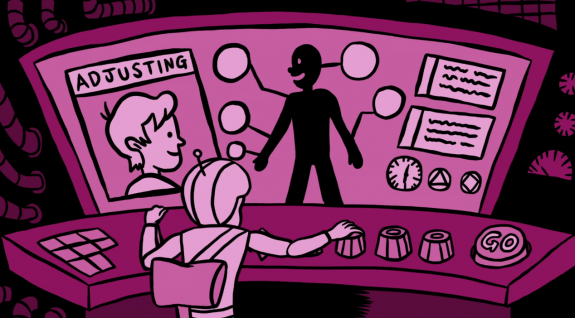6 effective ways to stop bullying and teach kindness to kids
By Laura McClure on November 2, 2015 in TED-Ed Innovative Educators

How do you teach kindness, acceptance and empathy to kids? We asked TED-Ed Innovative Educators to share their favorite ways to promote inclusive and positive social interaction in the classroom. Below, 6 effective ways to stop bullying and teach kindness to kids.
To combat bullying, show the ‘To This Day’ animated video. “I like this video because it relates to both poetry and bullying, and the strong animated images move at the same pace as Shane Koyczan’s poem,” says high school English teacher Evanthia Poyiatzi. Watch the ‘To This Day’ animated video here.
To teach kindness, ask kids how they want to be remembered. Do you want to be remembered as a bully, as a bystander…or as a kind and thoughtful hero? Questions like this one can make it easier for students to “get” the consequences of their everyday actions, notes middle school teacher Eric Johnson. For more questions, an extensive list of anti-bullying resources, and Eric’s 5-day lesson plan to help you teach kindness, go to EraseMeanness.org.

Try a student doodle challenge. One teacher challenged students to doodle about kindness. They could take the letters in the word “kindness” and doodle using the letters, or they could doodle anything that came to mind with regard to kindness. This student doodle is one result. It says “be kind.”
Teach good listening habits — by acting out bad habits. “I’ve found that one of the biggest hindrances to positive social interaction is the inability to listen well,” says one teacher. ”So I do the following exercise. First, I give each student a bad listening habit (looks at clock, interrupts regularly, makes the conversation all about himself/herself, focuses on other things besides the speaker, asks to use the bathroom in the middle of the conversation, answers mobile phone, etc). Then, I ask students to purposefully behave this way while discussing a prompt, and have students mingle around the room so they can meet a range of behaviors. Last, we debrief and share what it feels like to speak to someone with each of these bad listening habits. Students have fun behaving “badly” and develop an understanding of how their potential behavior can negatively affect someone else.”
Model polite behavior and kindness. ”I hear so many adults speak to kids in a condescending and even insulting tone. We need to say please and thank you and apologize when we make a mistake,” says English teacher Mitzi Stover. She adds, “This is not to say that we don’t have authority and need to exert it at times, but it is possible to be firm and kind.”
Show a StoryCorps video about the strength of allies. English teacher Josefino Rivera Jr. created this TED-Ed Lesson around a StoryCorps video in honor of Ally Week. He explains: “#AllyWeek is an international youth-led event encouraging students (and staff) to be allies with the lesbian, gay, transgender and bisexual members of their community in standing against bullying and name-calling, as well as developing skills to become stronger allies.” To help students develop the skills to become stronger allies right now, watch the StoryCorps video here.
Interesting in becoming a TED-Ed Innovative Educator? Fill out the application here.
Featured image from TED-Ed Animation: Rethinking Thinking.
Tags: Bullying, Kindness